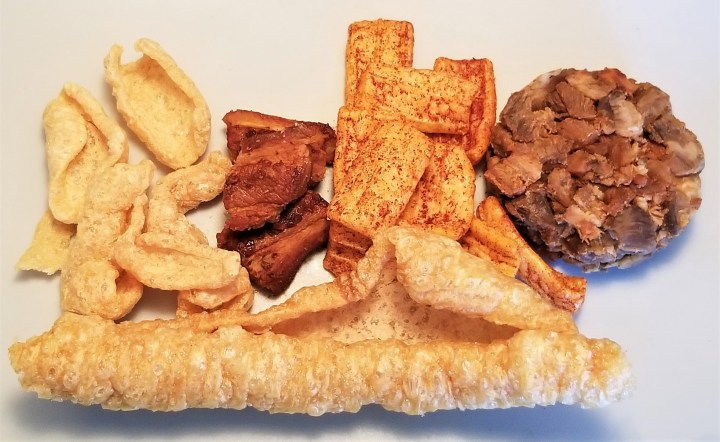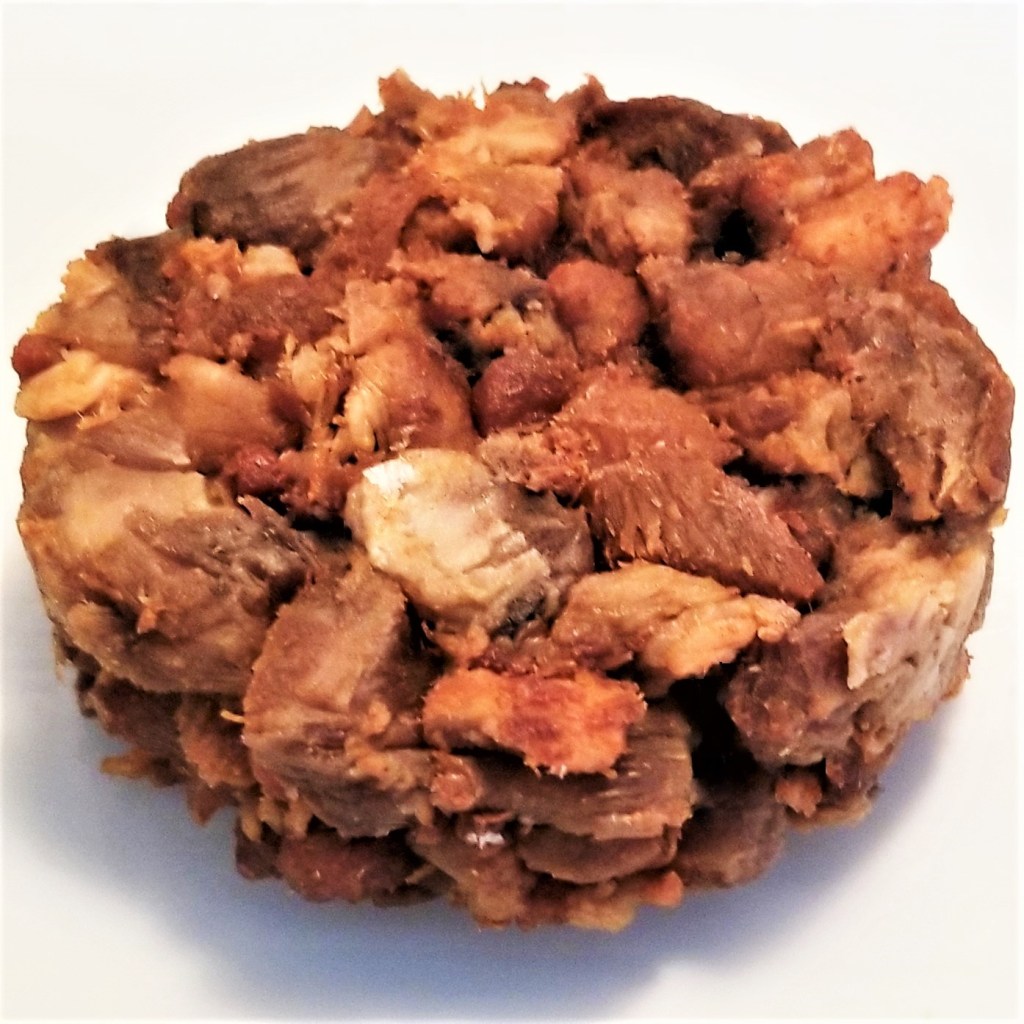
Chicharrón is a type of food originated in Spain, and from there, it became traditional also in many of its former colonies, including Mexico, some Central and South American countries, as well as The Philippines (chicharon). Preparation of chicharrón usually involves cooking pieces of fatty meat and/or skin until they are very crisp, mostly pork, although there are some variations with mutton, beef, chicken, and even dried sheets of wheat dough. The name derives from the word achicharrar, or chicharrar, which means to expose something to heat until it is charred or toasted. This term is probably an onomatopoeia of “chich, chich”, the whistling and crackling sounds from burning matter; it might “sound” strange, but there is no correct or wrong way when talking about sounds, and the word “crackling” is an onomatopoeia itself, from “crack”. Recipes for chicharrón vary greatly from country to country, and even from region to region within one country.
In Mexico, there are several types of chicharrón:
The best known chicharrón is made with pork skin, with or without some fat and meat attached; they are cooked, dried, and then fried in lard. Commercial brands pack bite-size pieces (shown at the top of this post, first from left), while large pieces are sold at markets:

It is common to have the crunchy rinds just crumbled into a warm corn tortilla, topped with any salsa, and enjoyed as a taco, on their own as a snack with a beer, or cooked in stews. I have written about fried pork rinds before, including a recipe in green sauce (click here to visit the post.)
A snack called chicharrón de harina (wheat flour chicharron) is made from sheets of dried wheat (photo below, left); when deep fried, the extreme heat produces the sheets to swell as they cook, producing a crunchy treat that looks like fried pork rind (photo below, right):

These snacks are very popular as street food, sold topped with hot sauce and lime juice outside schools and public buildings, or at outdoor venues such as parks and zoos. In recent decades, they have become the perfect substrate for the reception of a myriad of toppings, ranging from shredded veggies and salsa, to cheese, cream, and even fruit. Small pieces are seasoned with chili powder, salt and lime, also a favourite snack (shown at the top of this post, third from left).
Chicharrón prensado (pressed chicharron) is made from the bits left behind after frying carnitas and pork rinds. They are collected from the bottom of the pot, and pressed into perforated moulds, to interlace the bits of meat, fat and skin into a block, and remove some of the melted fat:

This type of chicharrón is used as filling for street foods such as gorditas and quesadillas.
And finally, one type that has become more popular in recent years, is chicharrón norteño (Northern style), consisting of generous chunks of pork belly, first boiled and then crisped in their own rendered fat:

These are eaten on their own as a snack, or as a satisfying filling inside a taco.
I will come back to this topic in my next posts, to share recipes and more details on the different types of Mexican chicharrones.








Love chincharrones – we used them, along with chopped onion and radishes, as a topping for Pozole…
LikeLike
Oh yes, yummy!
LikeLike
The Northern style is so good! There is a market by my house that has a full Mexican deli – and I can’t leave the store without a bag of those. I eat them with some tapatio sauce and I’m in heaven!! LOVE them!! Great article.
LikeLiked by 1 person
Thank you!
LikeLike
They all look so yummy Irene. Made me think of what I could find in the kitchen to make for dinner tonight. Thanks for joining in 🙂 🙂
LikeLiked by 1 person
Thank you, Brian and thank you for hosting!
LikeLiked by 1 person
This was something my father loved, maybe too much.
LikeLiked by 1 person
Hehe, irresistible for sure!
LikeLike
I recall some like on the left in your photo in Guatemala. Packaged like you would get potato chips. I’m not sure if they were the real thing (probably), or the wheat version.
LikeLike
Yes, very standard bagged snacks, they could have been either pork or wheat.
LikeLiked by 1 person
Tha snacks are looking tasty well written thanks for sharing 👌😊
LikeLiked by 1 person